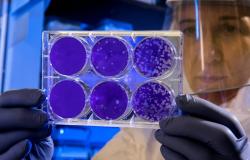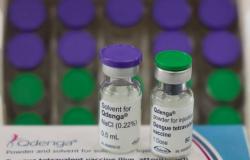But not all in the same way. This is why some human beings, even though they are the same age, can present different signs of aging, says the BBC.
Scientists believe that this is due to the existence of different biological patterns that determine the rate at which each of us grows older. These patterns are called ageotypes.
One of the pioneering researchers in this field is biologist Michael Snyder, director of the Department of Genetics at Stanford University, in the United States.
In 2020, Snyder and his team of scientists studied a group of 43 healthy men and women aged 34 to 68. They evaluated its molecular biology at least five times over two years.
Using blood, feces and other samples, the study tracked the levels of certain microbes and biological molecules, such as proteins, metabolites and lipids present in study participants.
With this, they sought to discover what really happens to the human body as we age. And they found an answer.
According to them, people follow certain biological pathways that determine which parts of the body age sooner or later.
This is where ageotypes arise. “They are patterns of aging,” explains Snyder to BBC News Mundo, the BBC’s Spanish-language service.
“We all age in different ways. In some people, the immune system ages faster, in others the kidneys, or the metabolic system, and so on.”
“In each case, they are different organs or sets of organ systems,” Snyder continues.
“In the same way as when a car ages and the different parts wear out at different rates: the engine, the battery or the chassis. The same happens with our bodies.”
Snyder’s research mentions four main ageotypes:
1. Metabolic: occurs when the metabolism – responsible for converting food into energy and eliminating toxic substances, among other things – ages at a faster rate than other body functions.
When metabolism is impaired, problems such as obesity, heart disease and other disorders such as diabetes arise.
2. Immunological: when people’s immune systems show deeper signs of aging.
If the immune system begins to fail, the body loses its ability to fight off invading germs, such as infections and other illnesses. As a result, according to Snyder’s study, higher levels of inflammation or immunological diseases may arise.
3. Hepatic: This ageotype is related to the aging of the liver, which is mainly responsible for processing nutrients and filtering toxins that are harmful to the body. If the liver does not function correctly, diseases such as cirrhosis can develop.
4. Nephrotic: occurs when kidney function shows symptoms of aging.
The kidneys help filter and balance the body’s fluids, discarding them through urine. They also regulate blood pressure and stimulate the bone marrow to produce red blood cells, among other things. If the kidneys show signs of aging, they may no longer filter harmful fluids, causing changes in blood pressure or imbalances in essential minerals.
Michael Snyder explains that these four ageotypes are “just the beginning.” “It is already known that there are many more,” according to him.
The specialist mentions examples such as cardiovascular ageotype, directly related to the heart being biologically older than other organs, and oxidative stress, which happens when our body produces compounds that are not useful for life and, consequently, alter the functionality of the cell membrane.
According to the science and technology magazine New Scientist, after the study carried out by Snyder and his team, other scientists expanded the set of ageotypes. Biologist Kalliopi Gkouskou, from the University of Athens, Greece, was one of them.
In February last year, the researcher published a study with other scientists that states that there are other patterns of aging, related to “dysfunction of the brain” and the nervous system.
Brian Kennedy, from the Department of Biochemistry at the National University of Singapore, argued something similar.
“Our study demonstrates evidence that there may be several ‘clocks’ within the entire system: systemic drivers of aging overlapped with specific organ and tissue counterparts”, indicates their research published in 2022, which analyzed more than 4 thousand volunteers.
Kennedy added other patterns of aging to Snyder’s list: cardiovascular, physical fitness, sex hormones, skin and the gut microbiome.
That said, it is necessary to take into account that ageotypes are not mutually exclusive. In other words, the same person can be classified into two or more ageotypes.
“A metabolic ageotype can also be immunological,” highlights Snyder’s study.
Furthermore, the aging of one part of the body could lead to another, as they do not always age in isolation. If the cardiovascular system ages faster, for example, that person will likely have more problems with their kidneys, muscles or bones.
For Michael Snyder, the most important point of his discovery is that “it shows that it is possible to improve the way we age”.
“Knowing which parts are aging faster allows us to dedicate ourselves to working in these areas”, he highlights.
“If you have a metabolic ageotype, you take care of your diet. If you are in the oxidative stress group, you take more antioxidants. If it is immunological, it strengthens the immune system.”
During the research, there were people who showed a reduction in their aging markers. According to the biologist, this can be explained by changes in the participants’ lifestyle.
Tags: Ageotypes discover types aging note advantages knowing
--





